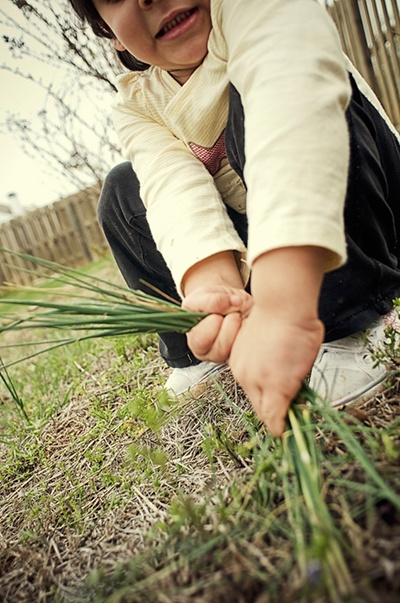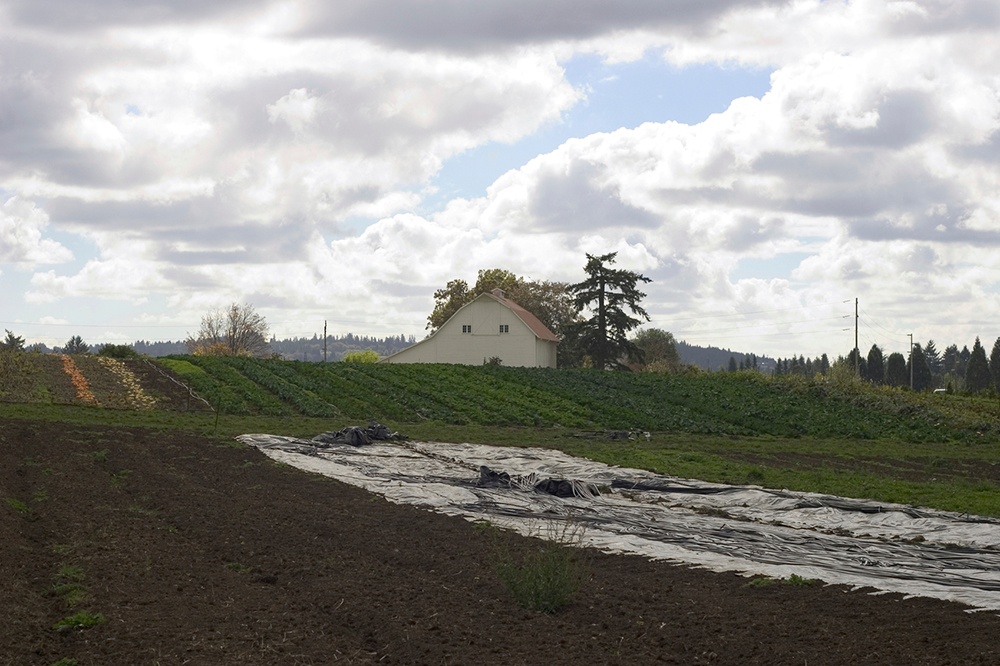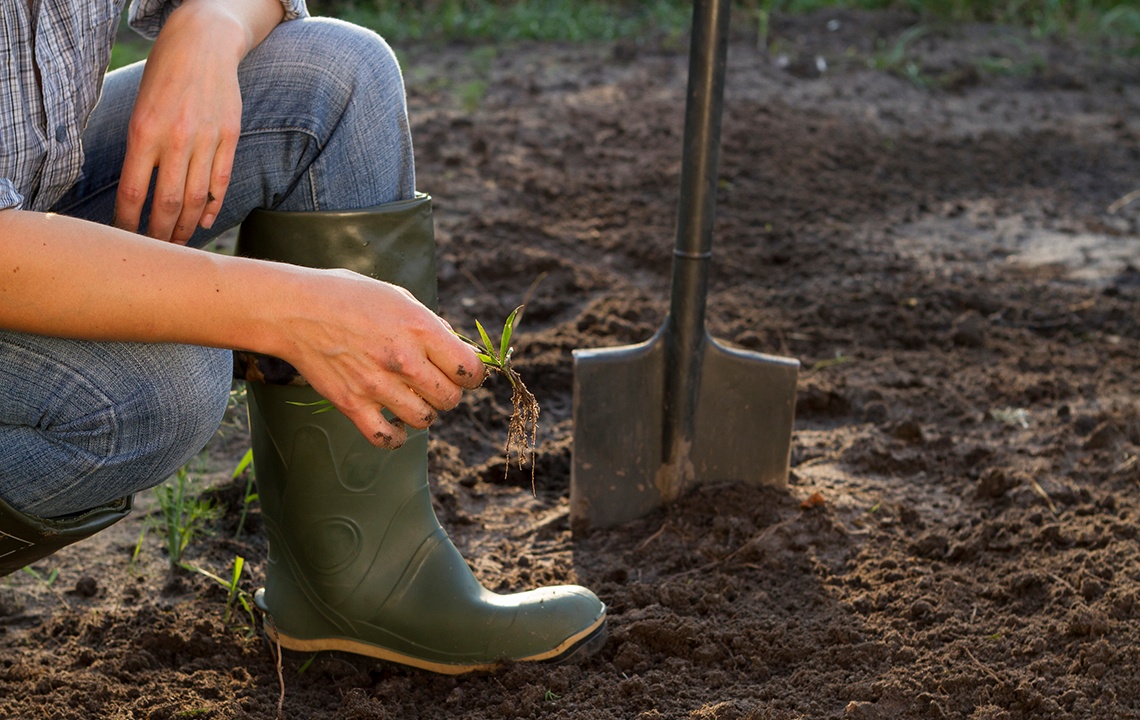Want weed-free garden beds without pesticides? The simple technique of tarping minimizes your time spent weeding while putting organic material back into the ground.
Organic gardening is all the rage and science and medicine agree: less pesticides equal greater health.
 But one of the trickiest things to implement in pesticide-free gardening is effective weed control.
But one of the trickiest things to implement in pesticide-free gardening is effective weed control.
Today, we’ll show you a ridiculously cheap, easy and effective way to eliminate spring weeds this fall (like, right now!) using a weed control technique called: tarping or “occultation.”
This little-known fall garden prep trick is making a comeback thanks to the organic micro farming movement.
Tarping can be completed in no time flat, and will naturally control weeds, kill unwanted grass and amend your soil all fall and winter long….no sod remover, weeding tools or weed killer required.
Sound too good to be true? It’s legit.
We first learned about it from our interview with superstar market gardener and best-selling author Jean-Martin Fortier.
Jean-Martin literally wrote the book on small-scale market gardening and runs a 6-figure organic farm, Les Jardins de la Grelinette, on just 1 ½ acres. He, along with other well-known organic growers, uses this technique to prep his beds.
Read on to learn how a humble tarp can help you get rid of a grassy plot, reduce weeds and build soil fertility in no time flat.
Fall Tarping Technique: Starve the Weeds, Feed the Soil
Early fall is the perfect time to try out tarping your garden beds.
 So, how does it work?
So, how does it work?
This simple practice involves smothering your garden bed for an extended length of time using heavy-duty UV treated black silage tarps.
The tarps create a hot and moist environment that will germinate weed seeds in the soil and then starve those weeds of sunlight, killing them off.
This also works to smother unwanted grass, making it ideal for prepping new beds or killing existing weeds.
The dead plant residue then begins to rot and gets munched up by worms, thus feeding the soil organic matter to build soil health.
By tarping your beds, you minimize your time spent weeding and tilling while effortlessly putting organic material back into the ground.
It also prevents outside weed seeds from blowing into your beds, minimizes soil erosion from uncovered soil and saves you the trouble of planting a cover crop.
This can also be used throughout the growing season on established beds to keep a garden weed-free.
So, how do you tarp a bed?
Get your hands on a sturdy 6-mil black silage tarp that is UV treated, like this one.
Manufacturers claim UV-treated tarps last a lot longer than non-treated tarps, up to 10 years, but most any heavy-duty, tear-and-hole free silage tarp should do the trick.
Lay your tarp on your garden beds and weigh down the middle and edges with rocks, sandbags, etc.
Then let it sit and forget about it until you’re ready to garden next spring.
That’s it. Tarp, weigh down and spend the next 5-6 months dreaming of planting in your weed-free garden beds without pesticides…it’s that simple.
A little late getting started? No problem, the minimum recommended time for tarping is 3-6 weeks. So even if you start in February you can still expect results.

Do it now, and come spring when you pull back the tarp, you will see the magic: a grass-free weed-free garden bed ready for the next steps: bed prepping, bed shaping and soil amending,
But don’t rest on your laurels just yet, come spring you will have one more round of tarping to do. Which brings us to…
Spring Tarping Technique: Create a Stale Seedbed
Now that you’ve pulled back your tarp and basked in the beautiful, weed-free soil…it’s time to tarp again.
A modified tarping technique can also be used just prior to spring seeding or planting to further reduce your spring and summer weed pressure.
This is a well-known process called the Stale Seedbed Technique.
Here’s how you do the Stale Seedbed Technique:
Three weeks before seeding or planting and after you have shaped your beds, amended your soil and watered heavily; lay down your trusty tarp.
This will germinate any remaining weed seeds in the top two inches of your soil.
The beauty of the technique is you force weed seeds to germinate early, making them weak, unestablished and super easy to pull out.
After three weeks have passed, remove the tarp, then hoe or hand weed any weeds that have come to the surface.
One note of caution. As you weed the bed, do not run your garden hoe or other weeding tools deeper than two inches.
Weeding any deeper will pull up other weed seeds from the seed bank in your soil causing them to pop up soon after planting.
A little work now = less weeding and healthier gardens next year
We all want less toxins in our lives—especially when it comes to gardening and farming at home.
As you can see, with just a small investment in a good tarp and a little time (less than an hour if you have a small garden bed) these techniques will go a long way to reduce your garden’s weed seed bank, without the use of weed killers.
And if done every year consecutively, it will result in less ongoing weed pressure and less weeding/weed treating.
All gain, zero pain…and a lot less weeds and pesticides. A win-win-win-win!
Are you looking for the right piece of land to start your country life? View available rural properties throughout the South on our parent company's website, RaydientPlaces.com.
























